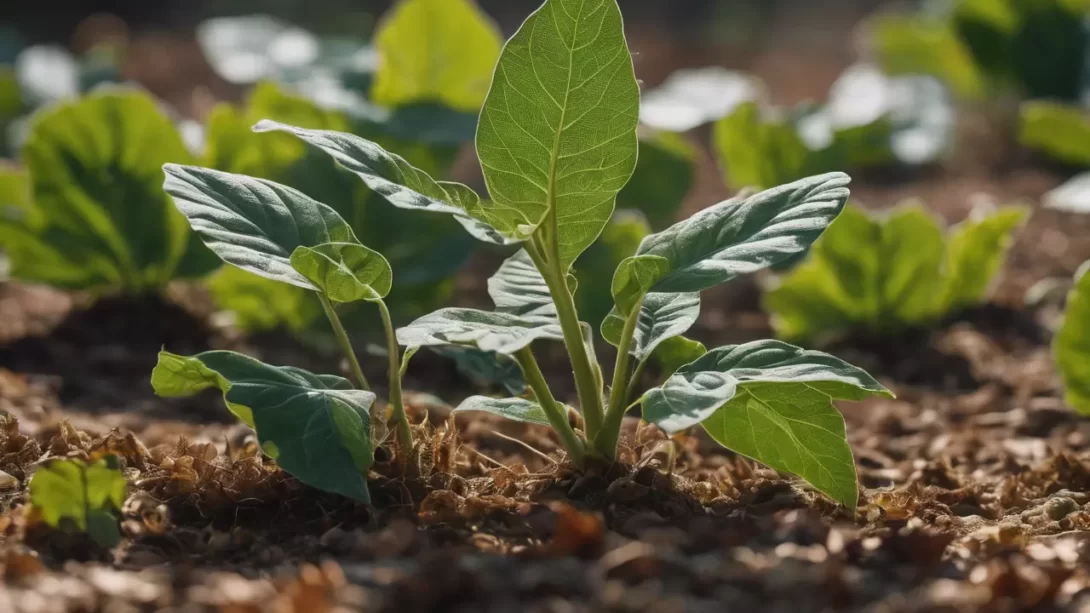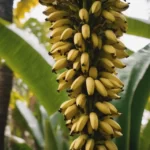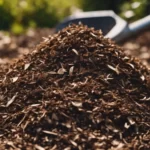Squash plants are a staple in many vegetable gardens, prized for their nutritious fruits and hardy nature. An essential part of recognizing and caring for squash plants is understanding the appearance of their leaves. Squash leaves are not only vital for the plant’s health and fruit production but also add lush greenery to the garden.
Identifying Squash Leaves
Squash leaves are large and have a distinct appearance that makes them relatively easy to identify. Their size can be quite impressive, often spreading wide to capture sunlight.
- Size and Shape: The leaves are typically broad and somewhat heart-shaped, with pointed tips. They can range from 8 to 12 inches in width and length, providing ample surface area for photosynthesis.
- Color: A healthy squash leaf is usually a vibrant green. The intensity of the green can vary slightly depending on the squash variety and the plant’s overall health.
- Variations Among Squash Types: Different squash types can exhibit slight variations in their leaves. For instance, summer squash leaves might be a lighter green and slightly less robust than those of winter squash, which tend to be darker and more substantial.
Recognizing these characteristics can help gardeners distinguish squash plants from other garden plants, ensuring proper care and identification, especially in mixed vegetable gardens.
Texture and Feel of Squash Leaves
Squash leaves have a unique texture and feel that further aids in their identification.
- Texture: The surface of a squash leaf is typically somewhat rough and bumpy. This texture is due to the presence of tiny, soft spikes or hairs, known as trichomes, which cover the leaves.
- Feel: When touched, these leaves often feel slightly prickly or fuzzy, a characteristic that helps in reducing evaporation and protecting the leaves from pests.
This texture is not just a distinctive feature but also plays a crucial role in the plant’s survival and health, offering protection from insects and excessive water loss.
Leaf Growth Pattern
The pattern in which squash leaves grow and are arranged on the plant provides insights into the plant’s health and growth habits.
- Growth on the Plant: Squash leaves grow along the vine of the plant. They emerge from the stem, often alternating sides as they progress. This arrangement allows each leaf to have space and access to sunlight, vital for photosynthesis and healthy growth.
- Spacing of Leaves: The leaves are generally spaced out along the vine, with each leaf having a significant stem, known as a petiole, connecting it to the main vine. This spacing is important for air circulation, which helps in reducing the risk of fungal diseases.
Understanding the growth pattern of squash leaves not only helps in proper identification but also in effective garden management, ensuring that each plant has adequate space and resources for optimal growth.
Changes Through the Seasons
Throughout the growing season, squash leaves can undergo noticeable changes. These changes can be indicative of the plant’s stage of growth, overall health, and the environmental conditions.
- Seasonal Changes: In the early stages of growth, the leaves are smaller and lighter in color. As the plant matures, the leaves become larger, darker, and more robust. During the peak of the growing season, the leaves are at their largest and most vibrant.
- Impact of Environmental Conditions: Factors like sunlight, water, and nutrient availability significantly affect the appearance of the leaves. For instance, inadequate sunlight can lead to smaller, paler leaves, while overwatering can cause them to yellow and wilt.
- Age and Health Indicators: As the plant ages, especially towards the end of the growing season, leaves may begin to yellow and die back. This is a natural part of the plant’s lifecycle. However, premature yellowing or spotting during the peak growing season can indicate issues like nutrient deficiencies or disease.
Monitoring these changes in squash leaves throughout the growing season can provide valuable clues to gardeners about the needs and health of their plants, allowing for timely interventions and care.
Common Issues with Squash Leaves
Like all plants, squash can encounter several issues that manifest in their leaves. Recognizing these signs early can be crucial for maintaining healthy plants.
- Pests: Squash leaves are susceptible to pests like squash bugs, aphids, and spider mites. These pests typically leave visible signs, such as holes in the leaves, a sticky residue, or webbing.
- Diseases: Common diseases affecting squash include powdery mildew, which presents as a white, powdery coating on the leaves, and downy mildew, which causes yellow spots that turn brown.
- Nutrient Deficiencies: Yellowing leaves can indicate a nitrogen deficiency, while brown edges might suggest a potassium deficiency. Proper soil management and fertilization can prevent these issues.
Regular inspection of squash leaves for these problems is key. Early detection and appropriate treatment can save the plant and ensure a good harvest.
Conclusion
Squash leaves, with their distinctive size, shape, and texture, are not just vital for the plant’s growth but also add beauty to the garden. Understanding their appearance, growth pattern, seasonal changes, and potential issues is essential for any gardener looking to grow squash. Observing your squash plants regularly and responding to any changes can lead to a bountiful and healthy harvest. Whether you’re a seasoned gardener or a beginner, squash plants can be a rewarding addition to your garden, offering both culinary delights and the joy of gardening.



